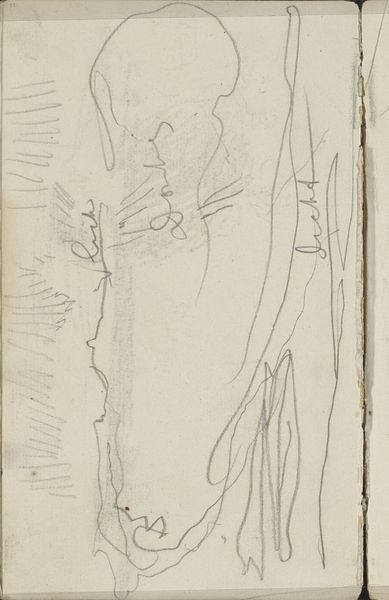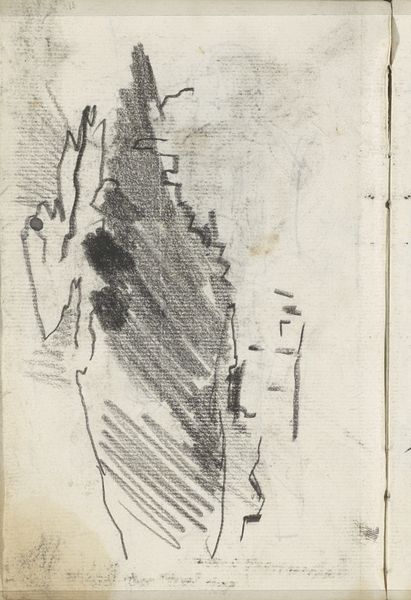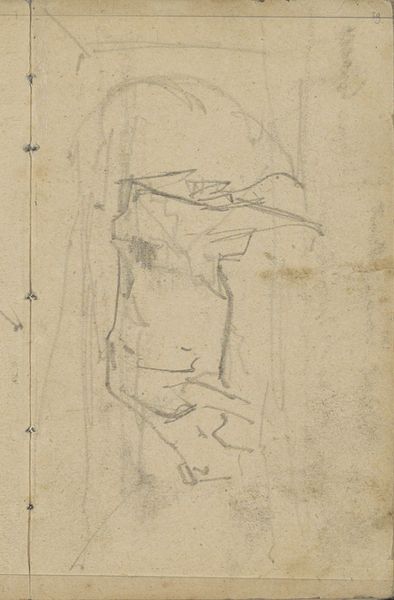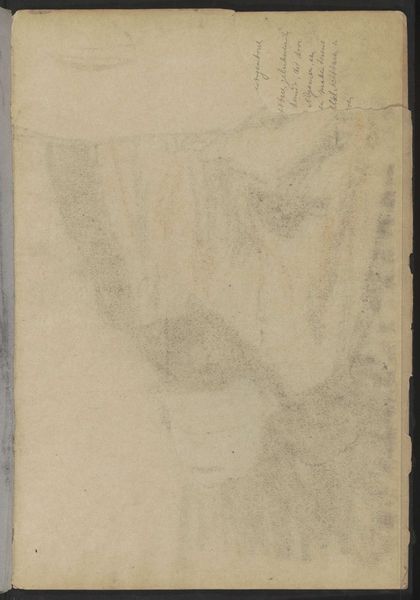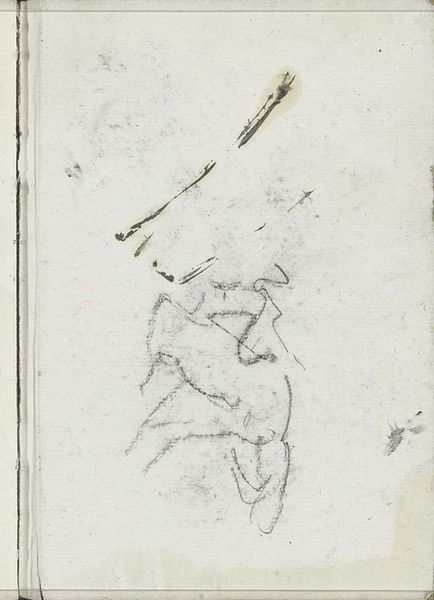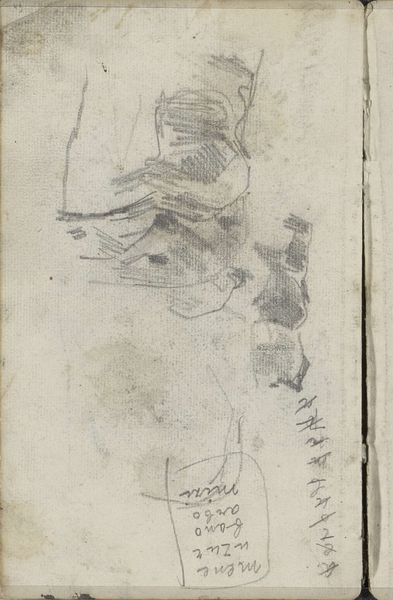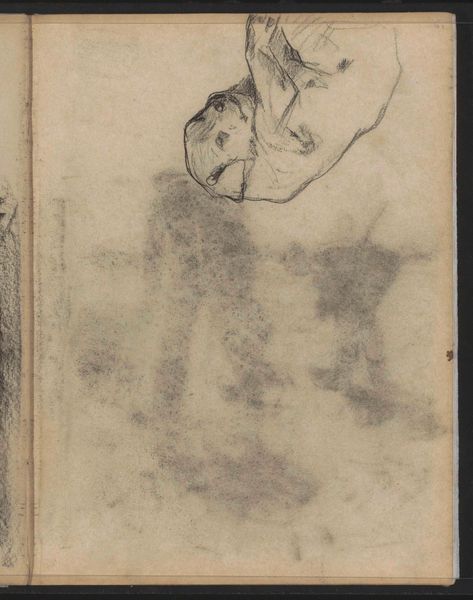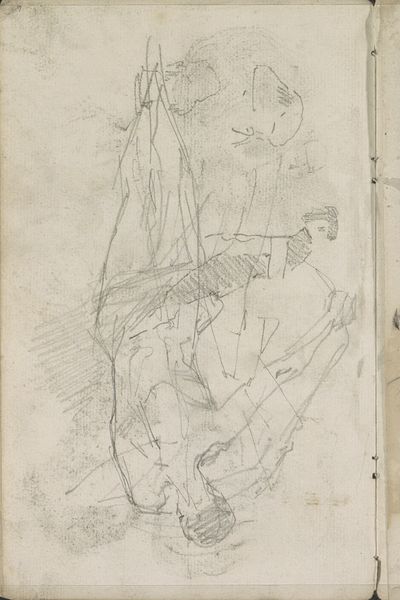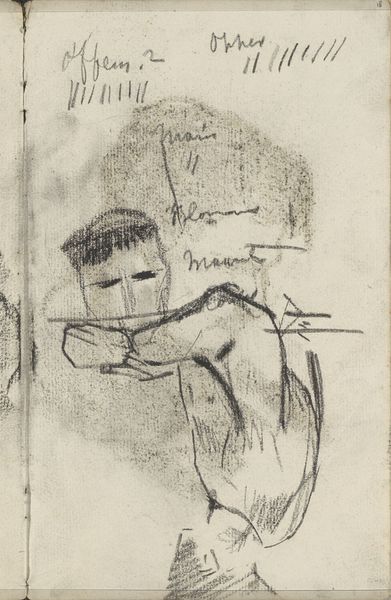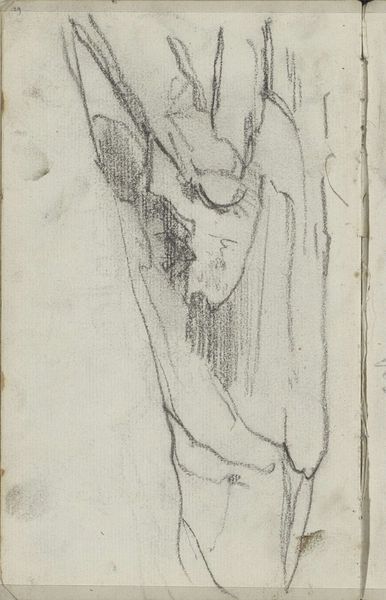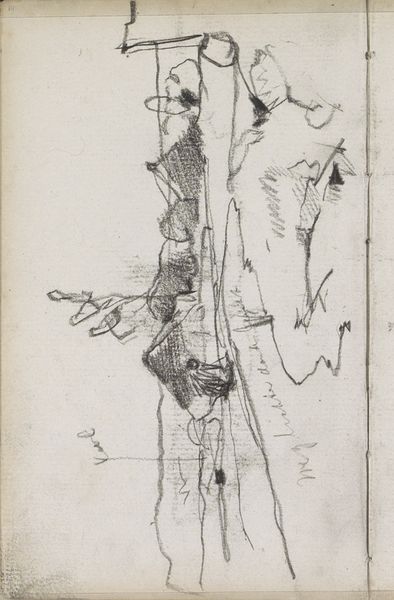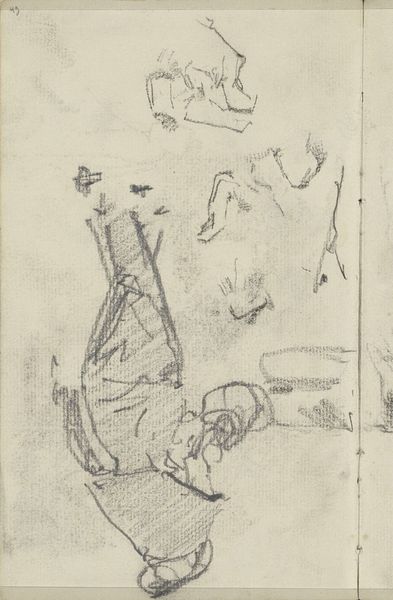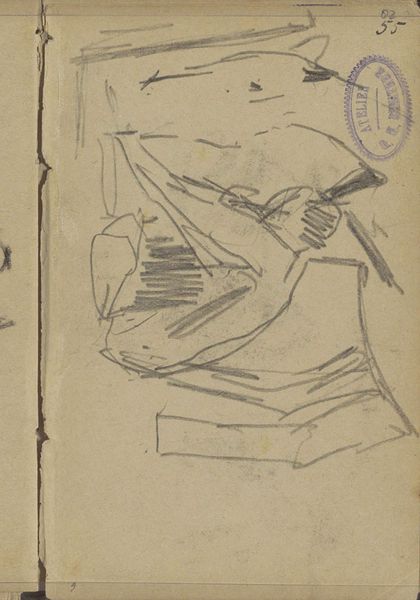
Copyright: Rijks Museum: Open Domain
Curator: Here we have George Hendrik Breitner's "Seated Female Nude," a pencil drawing on paper created sometime between 1886 and 1898. Editor: My first thought is its ephemerality. The looseness of the sketch gives the figure a vulnerable, almost vanishing quality. Curator: Indeed, the drawing possesses a sense of immediacy, reflecting the fleeting impressionistic style Breitner embraced. Consider how line and shading combine. Notice the economy of strokes used to convey the model's form and the texture of the draped fabric around her. Editor: Yet, even within the swift strokes, there is a societal construct present. Breitner was a figure of the Amsterdam Impressionism movement, capturing urban life. His nudes often appeared detached from the sentimental, placing the female body as part of a wider reality—urban, modern, and observed. It makes one wonder about the circumstances under which this nude was drawn and how it reflects prevailing attitudes toward women at the time. Curator: It’s fascinating how his compositions disrupt traditional notions of beauty and artistic representation. He isn’t idealizing the female form. The stark light creates dynamic plays of shadow that emphasize the unidealized shapes. Editor: Exactly. This wasn't just about aesthetics but about inscribing women in specific visual terms in modernising Amsterdam. This is more than an academic study; the artwork functions as a coded socio-political statement, embedding this nude within the dynamics of class, gender, and observation. Curator: So, while we can analyze the surface, noting Breitner's engagement with impressionistic techniques, his drawing ultimately invites considerations extending beyond aesthetic categories and styles. It offers clues, even whispers, concerning modern female figures. Editor: Indeed. Even within the incomplete form, Breitner's "Seated Female Nude" encapsulates layers of context beyond artistic approach. Thank you for elucidating the visual vocabulary. Curator: And thank you for adding that socio-historical framework! It truly elevates understanding the visual encoding happening here.
Comments
No comments
Be the first to comment and join the conversation on the ultimate creative platform.
